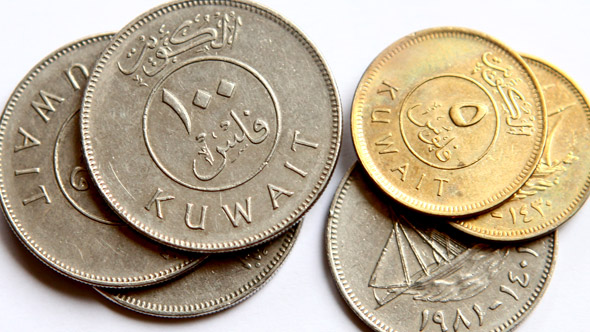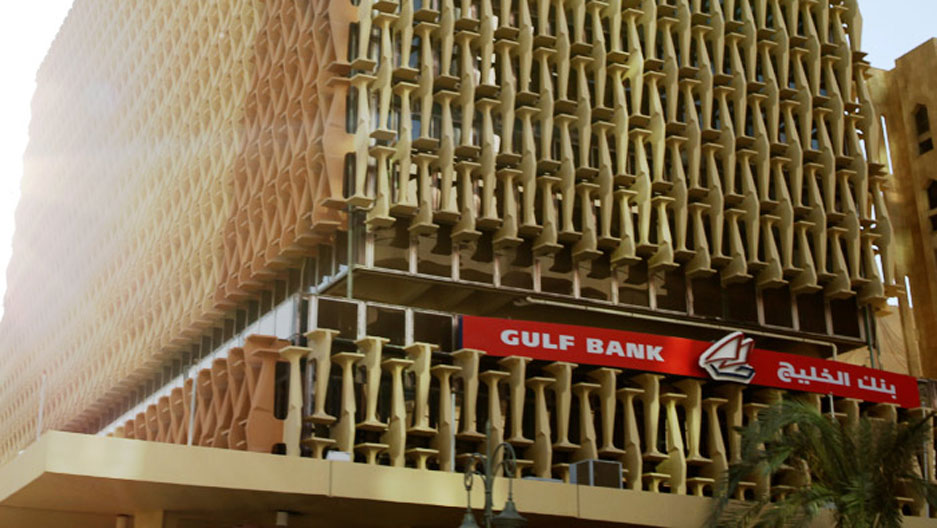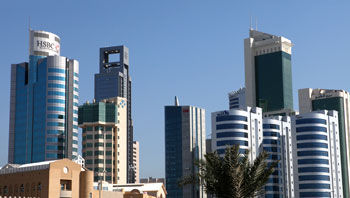Kuwait: Banking Sector Banking on Home-Made Challenges
Although the well-capitalized Kuwaiti banking sector has digested the financial crisis by bringing down the share of non-performing loans (NPLs) and getting back to profits, the political ups and downs as well as the economic (oil) monoculture in the northern Gulf state prevent the sector from achieving its full potential.

Although the well-capitalized Kuwaiti banking sector has digested the financial crisis by bringing down the share of non-performing loans (NPLs) and getting back to profits, the political ups and downs as well as the economic (oil) monoculture in the northern Gulf state prevent the sector from achieving its full potential.
Kuwait’s financial sector looks so bloomy and international, with branches of Kuwait’s largest lender, National Bank of Kuwait (NBK), a well-known entity in the world’s leading financial cities. The northern Gulf state’s largest lender (as determined by assets) has outlets on the Champs-Elysees in Paris, in Geneva near the famous Grand Hotel Kempinski, as well as in London, New York, Shanghai, Singapore and Beirut.
Lehman’s long shadow
“As far as demand for loans is concerned, unfortunately most, if not all, banks in Kuwait are extremely liquid, but find it very difficult to place their loans with credible borrowers or credible projects. So, the demand for loans is down simply because there is uncertainty about the future.”
But NBK, whose eye-catching brand with the blue camel is somewhat unique in the Arab world, cannot disguise the Kuwait banking industry’s home-made challenges. When in December 2008 investment bank Global Investment House defaulted on a USD $200 million loan, the alarm bells rang in the Kuwait City’s Sharq district, the country’s “Wall Street”.
“Kuwait was severely hit by the crisis of 2008-2009,” confirmed Eduardo Eguren, CEO of Burgan Bank. While Global Investment House managed to achieve a turn-around, and the worst impact of the Lehman-fallout is over, the industry faces internal obstacles.
“The lack of opportunities is a major issue,” said Abdullah Al-Sumait, Deputy CEO at Ahli Bank of Kuwait or ABK. The whole industry is willing to lend but only to companies with good performance and a track record of mega-projects, either government or sometimes private sector.
According to Dr. George T. Abed, Director Africa and Middle East at the global banking association Institute of International Finance (IIF) ,”in Kuwait, the banking portfolio is highly exposed to real estate and investment companies, which have proliferated in recent years without adequate controls. The stressed domestic investment companies have put strains on the banking sector,” Abed said in the IIF’s regional outlook report, released in mid-April 2012. At Burgan Bank, for example, “Kuwait operation represents approximately two thirds (64%) of the group,” said CEO Eguren.
Gulf Bank outshines the sector
Not all market participants suffer from the strains Abed referred to. Talking about the bank he leads, Michel Accad, Chief General Manager and Chief Executive Officer (CEO) of Gulf Bank, has reasons to be proud. “A couple of years ago, the non-performing loans of Gulf Bank were particularly high – 24% of our total loans. Today, they are down to 10 or 11%, which is a remarkable reduction.” Moreover, according to the annual report 2011, “during the year, Gulf Bank successfully restored profitability, posting a net profit of 30.6 million Kuwaiti dinar, net of all statutory and precautionary provisions.
This turnaround was rewarded In December 2011. Gulf Bank was the only Bank in the region to get an improved credit rating and raised outlook by Standard & Poor’s. Gulf Bank’s long-term credit rating was upgraded from BBB- to BBB, and its outlook raised from stable to positive.
However, when it comes to the banking sector as whole, Accad cannot hide his worries: “As far as demand for loans is concerned, unfortunately most, if not all, banks in Kuwait are extremely liquid, but find it very difficult to place their loans with credible borrowers or credible projects. So, the demand for loans is down simply because there is uncertainty about the future.”
Markets and investors dislike uncertainty. “All this could change, if the government becomes much more aggressive in its development plan,” Accad is convinced. The idea behind “the plan” is to revive Kuwait’s economy with an ambitious USD $104 billion program. The Kuwait Development Plan was initiated in February 2010 but its implementation has become a victim of political stalemate in parliament, which was dissolved at the end of 2011. Subsequent elections were held in February 2012—the second parliamentary election in three years.
Michel Accad: “The plan was supposed to start a couple of years ago and so far very little has trickled down. We hope that there’s going to be much more activity in that area.”
The IIF’s Dr. George T. Abed shares Accad’s view in that regard, i.e., that the relatively modest non-hydrocarbon growth of 3.2% in Kuwait was due to the ongoing disputes between the ruling family and the parliament on policy implementation. “A higher level of growth requires a political consensus on much-needed reforms, and a shift in public spending to support increases in non-hydrocarbon productive capacity in the private sector,” Abed said.
ABK‘s Al Sumait warns his colleagues to wait passively for the government. “Support doesn’t depend entirely on the government; this is the private sector. Some of these companies haven’t learned the lesson, and instead, they try to survive on their own, which I don’t think will fly. Lots of them have recognized the problem and have increased their capital or structured an agreement with the other banks, and this also will help.”
This led Burgan Bank’s CEO Eguren to forecast that “in 2012, the banking sector is going to have a defensive year. Right now is a time when every banker needs to be cautious regarding risks.”
“I expect the NPLs to remain slightly stable,” said Burgan Bank’s Eguren. “There is some new that will come in, some will come out. However, the Central Bank might change its rulings and recognize that this way of forcing banks to report may look too conservative. They allow performing loans to be reported as such. If that happens, NPL’s will go down.”
All eyes on the Central Bank
The government is not the only institution that bankers ask for supporting measures. “I expect the NPLs to remain slightly stable,” said Burgan Bank’s Eguren. “There is some new that will come in, some will come out. However, the Central Bank might change its rulings and recognize that this way of forcing banks to report may look too conservative. They allow performing loans to be reported as such. If that happens, NPL’s will go down.” In 2011, Burgan Bank managed to reduce the cost of credit by 72%.
Eguren also plans to expand with a new business model: “There is another interesting source that we are looking for right now: to start having international activities even without physical presence there (particularly in the Gulf). Our corporate bank in particular has made some interesting inroads and I look forward to seeing that expansion continuing.”
Expansion is a must as lenders from Abu Dhabi and Qatar are pushing to new boundaries in Europe and East Asia. “In the 60’s and 70’s, Kuwait was the pearl of the Gulf region, and now it isn’t anymore. Other GCC states have taken that place, and now Kuwait wants to come back and regain that position, and this is expected to be soon,” said Ali Bank’s Deputy CEO Al Sumait.
Everything looks so international at Kuwait’s banking sector. But in reality Kuwait has to decouple itself from the local real estate market and to reach out to the world if it does not want to fall behind its peers in the GCC.